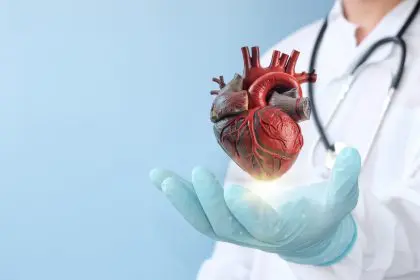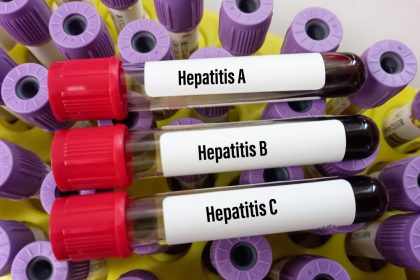Heart attacks conjure images of someone clutching their chest in sudden, dramatic pain. Yet a startling reality exists in cardiovascular medicine: you can indeed experience a heart attack without recognizing it happened. These “silent heart attacks” account for approximately 45% of all heart attacks, affecting millions of Americans each year.
Silent heart attacks occur when blood flow to the heart muscle is temporarily blocked but produce minimal or easily misinterpreted symptoms. Many people dismiss these subtle warning signs as indigestion, fatigue, or muscle strain, only discovering they’ve had a heart attack during routine medical tests months or even years later.
What exactly happens during a silent heart attack?
During any heart attack, a blockage occurs in one of the coronary arteries that supply oxygen-rich blood to the heart muscle. This blockage, typically caused by a buildup of plaque that ruptures and forms a clot, prevents adequate blood flow to part of the heart. Without oxygen, that section of heart tissue begins to die.
In classic heart attacks, this damage triggers immediate, intense chest pain and additional symptoms. In silent heart attacks, however, nerve damage, atypical symptoms, or a higher pain threshold may prevent the individual from recognizing what’s happening. The heart damage still occurs, but without the unmistakable warning signs.
The term “silent” is somewhat misleading, as these heart attacks do produce symptoms—they’re just frequently overlooked or attributed to other, less serious conditions.
5 subtle signs of a silent heart attack
While they may lack the dramatic chest clutching seen in movies, silent heart attacks do present warning signs. Here are five symptoms that might indicate a silent heart attack is occurring:
- Unusual fatigue – Extreme, unexplained tiredness that persists for days might be more than just overexertion. During a silent heart attack, the heart struggles to pump efficiently, leading to overwhelming exhaustion that rest doesn’t seem to help.
- Mild discomfort in the chest, arms, or jaw – Rather than crushing chest pain, silent heart attacks often manifest as mild pressure, squeezing, or discomfort in the center of the chest that comes and goes. This sensation might extend to the arms (particularly the left arm), neck, jaw, back, or stomach.
- Cold sweats and dizziness – Sudden, unexplained sweating or feeling lightheaded without obvious cause could signal reduced blood flow from the heart.
- Shortness of breath without exertion – Finding yourself winded from minimal activity or even while resting might indicate your heart isn’t functioning properly.
- Indigestion or nausea – Stomach upset, nausea, or heartburn-like symptoms that don’t respond to antacids could actually be signs of heart distress, particularly when accompanied by any of the above symptoms.
Who faces higher risk of experiencing silent heart attacks?
Certain groups face elevated chances of having a silent heart attack. People with diabetes top this list, as nerve damage from long-term diabetes can affect pain perception, including cardiac pain signals. This nerve damage means these individuals might not experience typical warning signs when heart tissue is deprived of oxygen.
Women experience silent heart attacks more frequently than men. While men typically report crushing chest pain during heart attacks, women often experience subtler symptoms like fatigue, shortness of breath, or what feels like indigestion. These differences in symptom presentation contribute to women’s heart attacks being missed or misdiagnosed.
Older adults also face increased risk, both because aging hearts become more vulnerable to damage and because many older individuals might attribute symptoms to normal aging processes rather than recognizing them as heart-related issues.
People with previous heart damage or who’ve experienced prior heart attacks may have developed scarring that affects nerve function, potentially masking symptoms of subsequent cardiac events.
The dangerous aftermath of silent heart attacks
Silent heart attacks create a particularly treacherous situation. Since they often go undetected, people don’t receive appropriate medical care or make necessary lifestyle changes to prevent future cardiac events.
The damage to heart muscle still occurs, even without dramatic symptoms. This damage increases the risk of heart failure, where the heart becomes too weak to pump blood effectively throughout the body. The scar tissue that forms after a heart attack can also disrupt electrical signals, potentially leading to arrhythmias (irregular heartbeats) that further compromise heart function.
Perhaps most concerning, having one silent heart attack significantly increases the risk of having another, potentially more severe cardiac event in the future. Each instance creates additional heart damage, progressively weakening this vital organ.
Prevention and detection matter
Regular checkups remain essential for everyone, but particularly for those at elevated risk. Routine electrocardiograms (EKGs) can sometimes reveal evidence of past heart attacks through the distinctive patterns they leave behind in heart electrical activity.
Cardiovascular risk assessment should be part of regular medical care, especially after age 40. This includes monitoring blood pressure, cholesterol levels, blood sugar, and other markers that might indicate developing heart disease.
For those experiencing any suspicious symptoms, seeking medical attention promptly remains crucial. Describing even mild or vague symptoms thoroughly to healthcare providers can help identify potential cardiac issues before they progress.
When to seek immediate medical attention
While understanding silent heart attack symptoms helps with awareness, any suspected heart attack—silent or otherwise—warrants emergency medical care. The window for effective treatment narrows quickly once a heart attack begins.
Even mild chest discomfort that lasts more than a few minutes or comes and goes deserves immediate medical evaluation, especially when accompanied by any additional symptoms mentioned above.
The heart’s resilience depends largely on how quickly blood flow is restored during a heart attack. Modern treatments can limit damage and preserve heart function, but only if administered promptly.
The reality of silent heart attacks reinforces the importance of cardiovascular awareness for everyone. By recognizing subtle warning signs and understanding personal risk factors, people can better protect their heart health and potentially prevent the serious complications that follow these quiet but dangerous cardiac events.

















